My ginger bug is probably my favorite ferment. Those of you who ever met me in person, may have already heard me raging about how awesome it is for 3o+ min (sorry guys and thanks for your patience :P). A ginger bug is a great way to enter into the world of fermented drinks without having to hunt down a scoby or kefir grains. Plus, it gives you a lot more freedom with regards to what you can ferment than for example kombucha. But I’ll go into all of that in more detail later in this post, let’s start by talking about what a ginger bug is and how you can start one.
How to start a ginger bug
A ginger bug is a fermentation starter similar to sour dough. It is basically just ginger fermenting in sugar water. You can use a ginger bug to make all sorts of wonderful fermented sodas that are not only lower in sugar than commercial sodas but also packed with healthy enzymes and probiotics. On top of that, they also taste delicious. I don’t even remember the last time I had a regular soda.
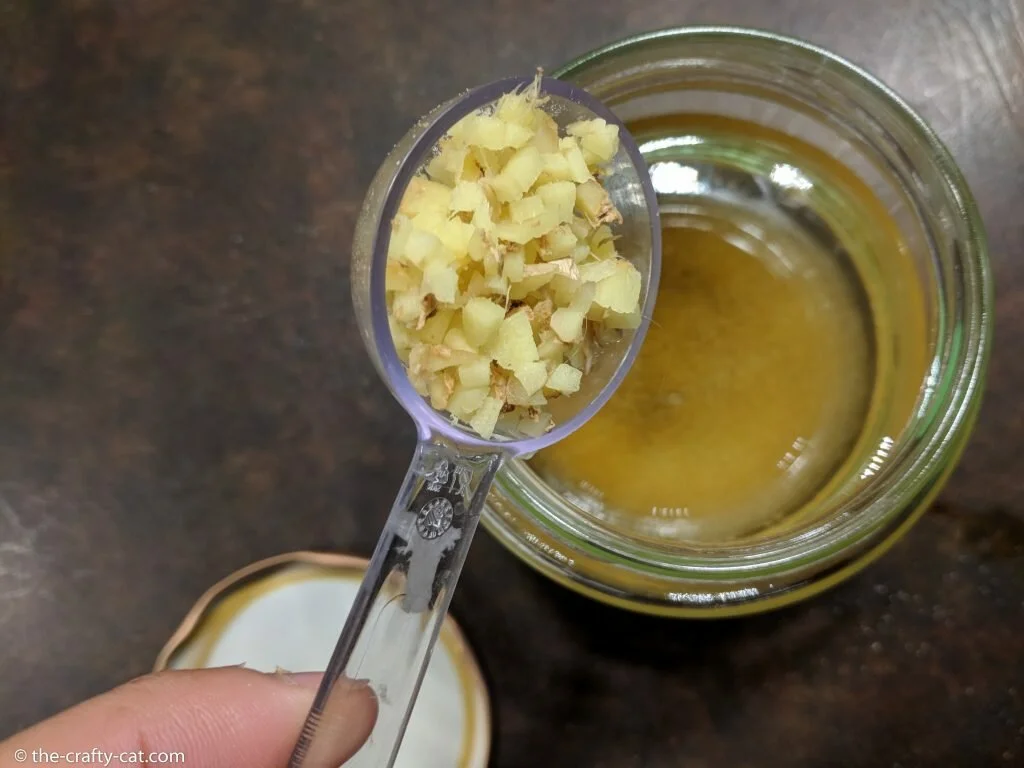
What you will need
- A pint jar or slightly larger
- Organic Ginger
- Organic sugar (any kind)
- Unchlorinated Water
Day 1
- Clean and rinse your jar thoroughly making sure there is no soap residual.
- Fill the jar with 2 cups of unchlorinated water.
- Cut or grate 2 tbsp ginger (with peel on) finely and add it to the water.
- Add 2 tbsp of sugar and stir to combine.
- Cover your jar with a cheesecloth or another breathable cloth securing it with a rubber band to keep any animals/dirt out.
- Set it in a warm (22-26 °C / 72-80°F) place out of direct sunlight and give it a stir whenever you think of it (this speeds up the process).
Day 2-5
- Grate or finely chop 1 tbsp of ginger and add it to your bug.
- Add 1 tbsp of sugar.
- Stir to combine.
- Cover the ginger bug with the cloth again and leave it on the counter. Stir or swirl the jar occasionally.
Day 5 + (Maintenance)
- Your ginger bug is considered active once it bubbles and has a layer of foam on the top even before you feed it. This usually occurs between day 5-7. Once you reach this point, you may use it. (See recipe and inspiration below)
- When you are done using it, seal the jar with the remaining ginger bug with an airtight lid and place it in the fridge.
- 1 x a week remove the ginger bug from the refrigerator and allow it to come to room temperature. Feed it 1 tbsp of ginger and 1 tbsp of sugar as well as add additional water as necessary.
- Cover the jar with a cloth and let it sit a few hours or overnight, until bubbly again. You may now use it or return it to the fridge if you won’t be using it.
With these weekly feedings you can keep your ginger bug pretty much indefinitely. It is fairly hard to kill a ginger bug. However, sometimes it can overferment, in other words, it turns too alcoholic or acidic in flavor. When you try it, it should taste sweet, gingery and slightly fermented. If it tastes very alcoholic or yeasty, you may want to start a new one, because it can give your ginger bug sodas an off flavor.
Ginger bug uses (+ natural ginger ale recipe)
There are virtually no limits on what you can ferment using a ginger bug. The most common or traditional use is making a natural ginger ale. In this case, you simply ferment sweetened ginger tea. However, you can also use a ginger bug to ferment other teas (both herbal and ‘real’ tea).
Another great thing to ferment using a ginger bug are fruit juices and syrups. When doing so, you’d want to opt for a natural kind of juice with not too much added sugar and chemicals, or just press your own. You can also use syrups (preferably homemade of course) mixed with water as a base.
Finally, I would also encourage you to experiment with different herbs and spices for flavoring such as fresh mint, lavender or cinnamon.
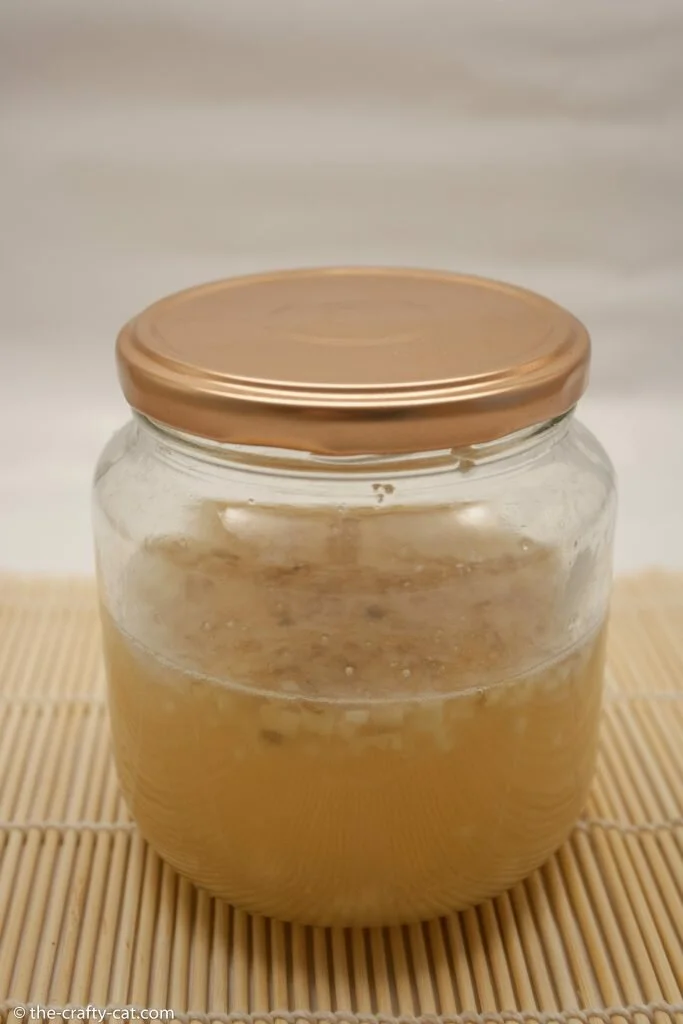
Natural ginger ale recipe
The basic principle and approach of making a natural soda from a ginger bug is always the same, whether you are making a more traditional ginger ale or something experimental like fermented mango juice. The rule of thumb is always 1/4 cup of ginger bug per 1 quart/liter of liquid.
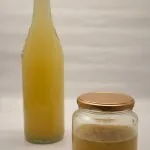
A natural fermented ginger ale made using a ginger bug.
- fresh ginger organic
- 1/4 cup sugar 50g
- 4 cups water 1L
- 1/4 cup ginger bug 60ml
- 1 quart / liter glas flip-top bottle
- strainer
- funnel optional
-
Roughly chop as much ginger as you can handle. The more you use the stronger the ginger ale will be. I usually use 1-2 small knobs resulting in about 2-3 tbsp of chopped ginger
-
Add the ginger, sugar and 2 cups of the water to a small pot. Heat to a boil, stirring until sugar has dissolved completely.
-
Once boiling, reduce heat to a simmer and cover the pot with a lid and allow the ginger tea to simmer for 5-10 minutes.
-
Take the ginger tea off the heat and allow it to cool. Add the remaining 1 1/2 cups of cold water to speed up the cooling.
-
Wait until the ginger tea has reached room temperature (don't skip this step or you will kill the bacteria in the bug if the tea is too hot!). Then add the ginger bug to it, stirring to combine.
-
Strain the mixture and fill it into the flip-top bottle. Seal the bottle and let it stand at room temperature until it carbonates (usually 2-3 days).
-
After 2-3 days you can start tasting the ginger ale as well as burping it to make sure the pressure doesn't overbuild. Once you like the taste and amount of fizziness, put the bottle in the fridge to slow down the fermentation.
-
The ginger ale is now ready to enjoy 🙂 Keep in mind that even when in the fridge it will continue to ferment slowly so you should burp it from time to time.
Ginger Bug FAQ and troubleshooting
Here are some common questions and problems you may run into. I figured I would answer them all here so that you wouldn’t need to search the comments. If I left anything out, ask me in the comments and I will add it to the list.
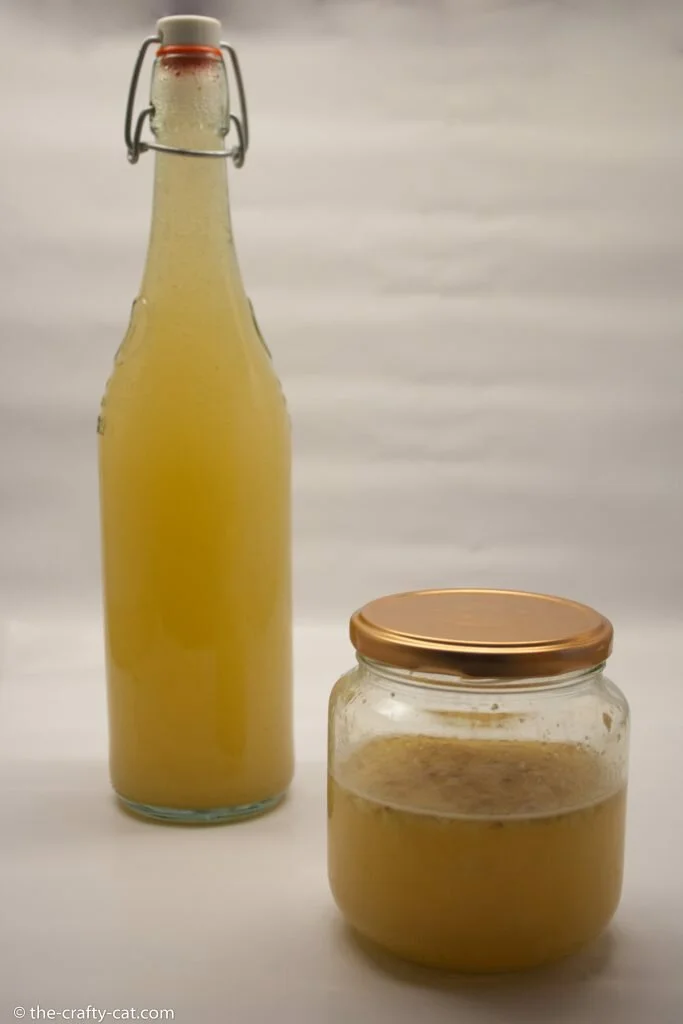
-
Why should the ginger be organic?
When using non-organic ginger you risk introducing pesticides and other chemicals to your ginger bug, these can affect the fermentation process. It is much harder to control and troubleshoot any problems that may occur during the process because it may be due to the chemicals on the ginger. If you only have non-organic ginger available, I would peel it. However, without the peel the ginger bug may take longer to become active.
-
Why don’t you peel the ginger?
The peel is where most natural bacteria are located on the ginger, thus including the peel helps speed up the process and create a stronger ginger bug. Because of the natural bacteria on the peel I always opt for organic ginger and I also avoid washing it, unless there is visible dirt on the ginger. If you do choose to peel your ginger this may increase the time it takes the ginger bug to get active.
-
Can I use honey or another natural sweetener?
The question whether honey or other sugar alternatives can be used in a ginger bug instead of sugar is a very common. Keep in mind that the sugar in the ginger bug is not for you, it is for the bacteria. You won’t be ingesting the majority of it. The bacteria will and sugar is their favorite food.
That being said, I would not recommend using anything other than sugar. Honey (especially raw honey) has its own bacteria as well as anti-bacterial properties, because of this it can mess with the environment in your ginger bug. Many other natural sweeteners, such as stevia can have similar effects. If you really want to experiment with other sweeteners, I would recommend waiting until you’ve successfully made a regular ginger bug or two before starting to experiment.
-
It has been over 7 days and my ginger bug doesn’t show any signs of activity.
Did you use non-organic ginger or chlorinated water? This can affect the time it takes for the ginger bug to become active or whether it can become active at all. You also need to take into account the temperature in your home. If it is very cold, the ginger bug may take longer to become active. If 7 days have past and you see no signs or sounds of bubbling or fizzing, I would suggest starting over either placing your jar at a different spot or using different water/sugar or ginger.
-
My ginger bug is slimy or viscose consistency.
Your ginger bug is allowed to be somewhat thicker than just water would be, but if it turns into a blob like consistency, then it is too thick. This can happen from time to time due to the fact that a ginger bug is fermented using wild yeast. It is also more likely to happen if you are fermenting your ginger bug close to other open ferments (such as kombucha or sauerkraut). I would recommend you keep feeding your ginger bug as normal for a few days and see what happens. Sometimes the yeast can ‘heal’ itself and the bug will become more liquid again. If that isn’t the case, throw it out and start over.
-
My ginger bug is moldy. What did I do wrong?
Don’t worry it can happen from time to time. Your ginger bug can turn moldy for several reasons. The most common one is not stirring enough or too much sugar. If you have pieces of ginger floating on the top that break through the surface of the jar, they can mold where they are exposed to air. This is part of the reason why you should stir your ginger around whenever you feed it. Sometimes the ginger you are using may already have mold spores on it which can also increase the chance of it molding. I suggest throwing it out and starting over, although you can also just scrape it off if it is only a little. If it occurs repeatedly, try moving your new ginger bug to a different location, as mold can also occur due to outside contamination.
If you like this post, don’t forget to pin it!
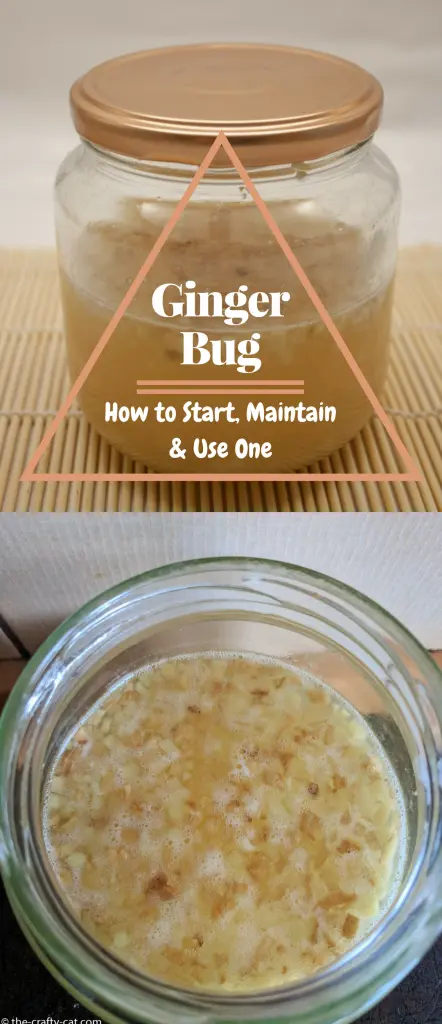


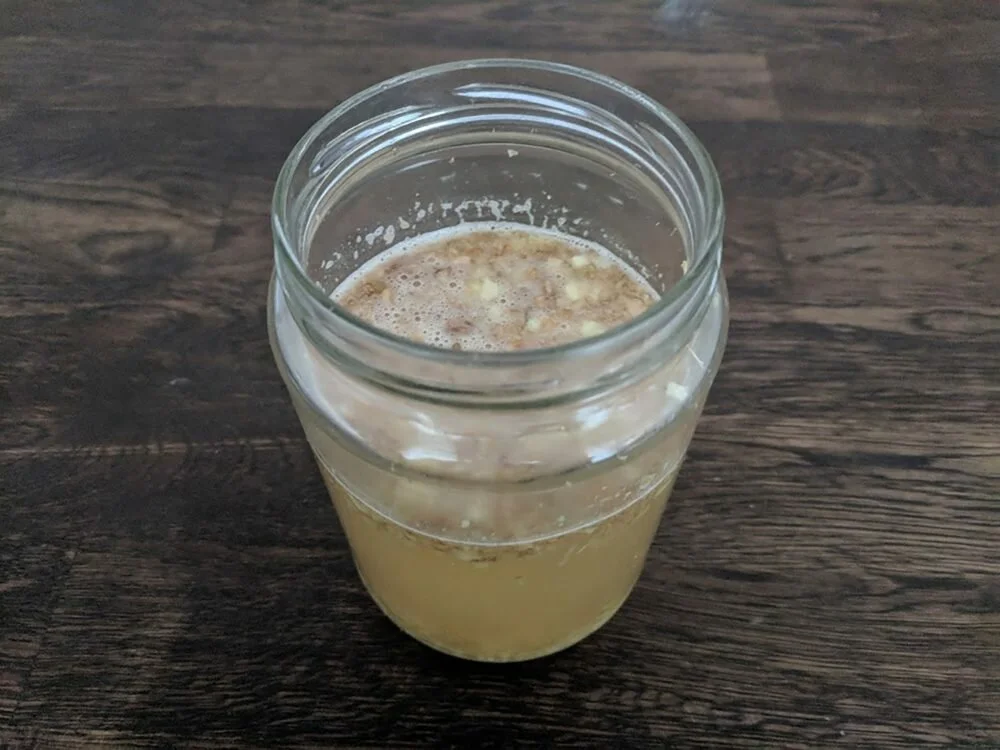
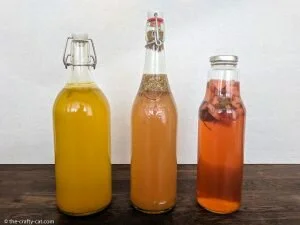
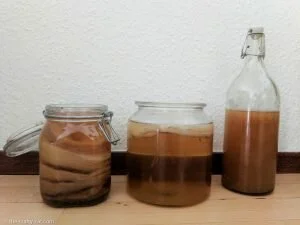
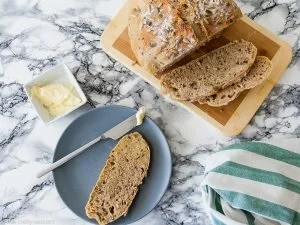
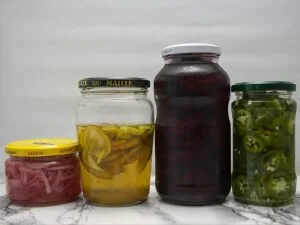



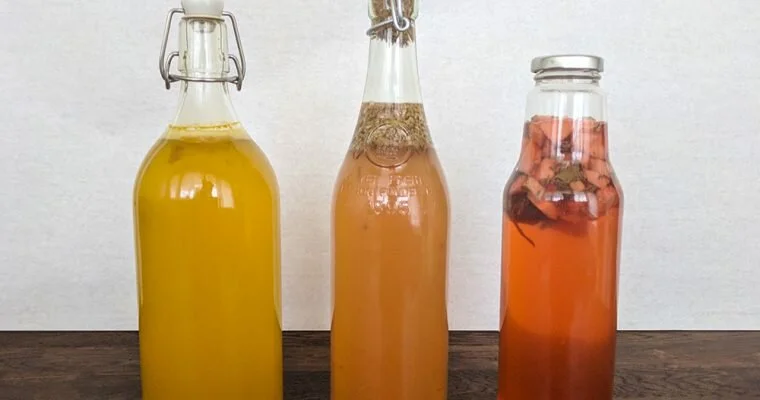
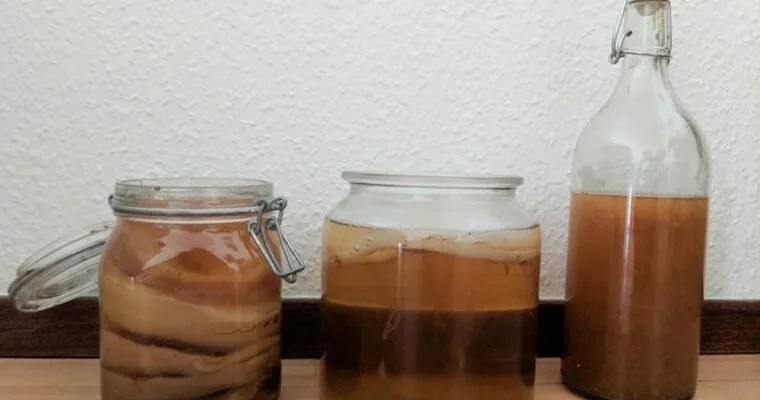
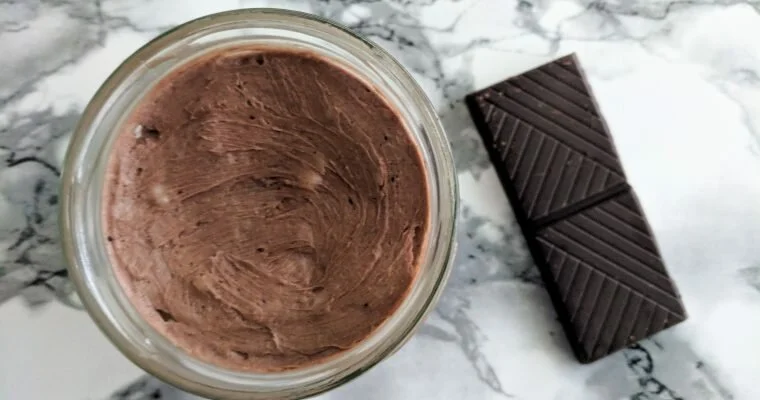
13
Leave a Reply
This seems to be something that I need to start ASAP! I’ve made my own homemade ginger ale, but never a starter to keep it going! I’ll definitely be using this for the year, and seeing if I can keep it up like my sourdough starter!
Is there anything I can do with the ginger that I strained out to make the ginger ale? Could I add it back to the bug maybe? Thanks for suggestions!
To be honest with you, I have never done anything with it, I usually put it in my worm compost. I don’t use it mainly because it takes on a different flavor due to the fermentation and also because my partner does not like ginger, so I don’t really cook or bake much with it. If the flavor doesn’t bother you, I would try using it to bake or cook with. I don’t think it would be potent enough to make tea with it. You should, however, use it immediately, because it can mold once it is outside of the… Read more »
Hi – thanks so much for posting these instructions. I’m just wondering – at some point do you strain the old ginger from the bug? If I keep feeding it weekly won’t it build up heaps of old ginger pieces? And when I add water at feeds, is it best to keep it at about 2 cups? Thanks again!
Whenever I use the ginger bug, I usually pour off some of the ginger with the liquid. I then strain that out and discard it. This way, your ginger also reduces every week and you keep space in your jar. Of course, if you don’t use the ginger bug often, you may end up with too many ginger pieces in it. In that case, I would recommend simply straining off some of the old ginger to make space for new. I usually keep mine at 2 cups meaning that whenever I use the bug I make sure to refill fresh… Read more »
Hi, how are you? Great post! I also found your reply to bok helpful, regarding pouring off some of the older ginger pieces and adding water. My ginger bug is about five days old and the amount of ginger is getting to be a lot, but none of the other blogs ever mention how or when is the best time to eliminate older ginger or add more water. LOL! No other posts addressed these basic questions, but you did mention it. Thank you. Question: If a particular recipe calls for additional sugar in the second ferment, is this sugar also… Read more »
Hi Stefan, so glad you found the post helpful! With regards to your question, adding sugar during the second ferment has (or can have) two purposes. 1) It is added to stimulate the production of CO2 which makes the drink carbonate while you ferment it in a sealed vessel. In other words it is food for the bacteria. 2) It can also be added to sweeten the drink. I’ve found that some recipes do come out fairly sweet (although nowhere near store sodas). As a rule of thumb I usually slightly reduce the sugar when trying a new recipe. My… Read more »
Well done Laura on an accessible and comprehensive post! I started making my ginger bug, but have just been adding 2Tbsp each of ginger and sugar, and it’s fizzy, but it is starting to smell like it’s getting a bit yeasty, so I came across your post when I was double checking my method. Yours is MUCH more detailed and beginner-friendly, so thank you!
So glad to hear that Janet! Let me know if you have any questions that I may not have covered 🙂
Laura
Hi thanks very much for the excellent article. The only thing for me is I’ve tried 4 times inch case it was OK until small bubbles then they seem to die. No amount of effort would revive the bug. Obviously doing somethin wrong!
I’ve reverted to using a half a teaspoon of dried yeast which is working.
Hi Chris, So sorry it took me so long to reply. I’m currently trying to get my degree so things are a little crazy. Regarding your bug. If the same thing happens every time there are a few things I would examine: – your ginger: is it organic? Are you washing it? Most of the yeast sits on the skin so ideally buy organic and don’t wash or peel it but just use the whole thing. – your water: is it chlorinated? Chlorine and other additives are usually antibacterial and can kill your ginger bug. – if none of that… Read more »
Hi! I have a great ginger bug but I’m going on a two week vacation. Can I rest it in the fridge that long?
If it is strong (meaning you’ve had it and kept it alive for a while) then that should be fine. Just make sure to feed it at room temperature 1-2 extra days to make sure it’s strong again prior to using it after your vacation.